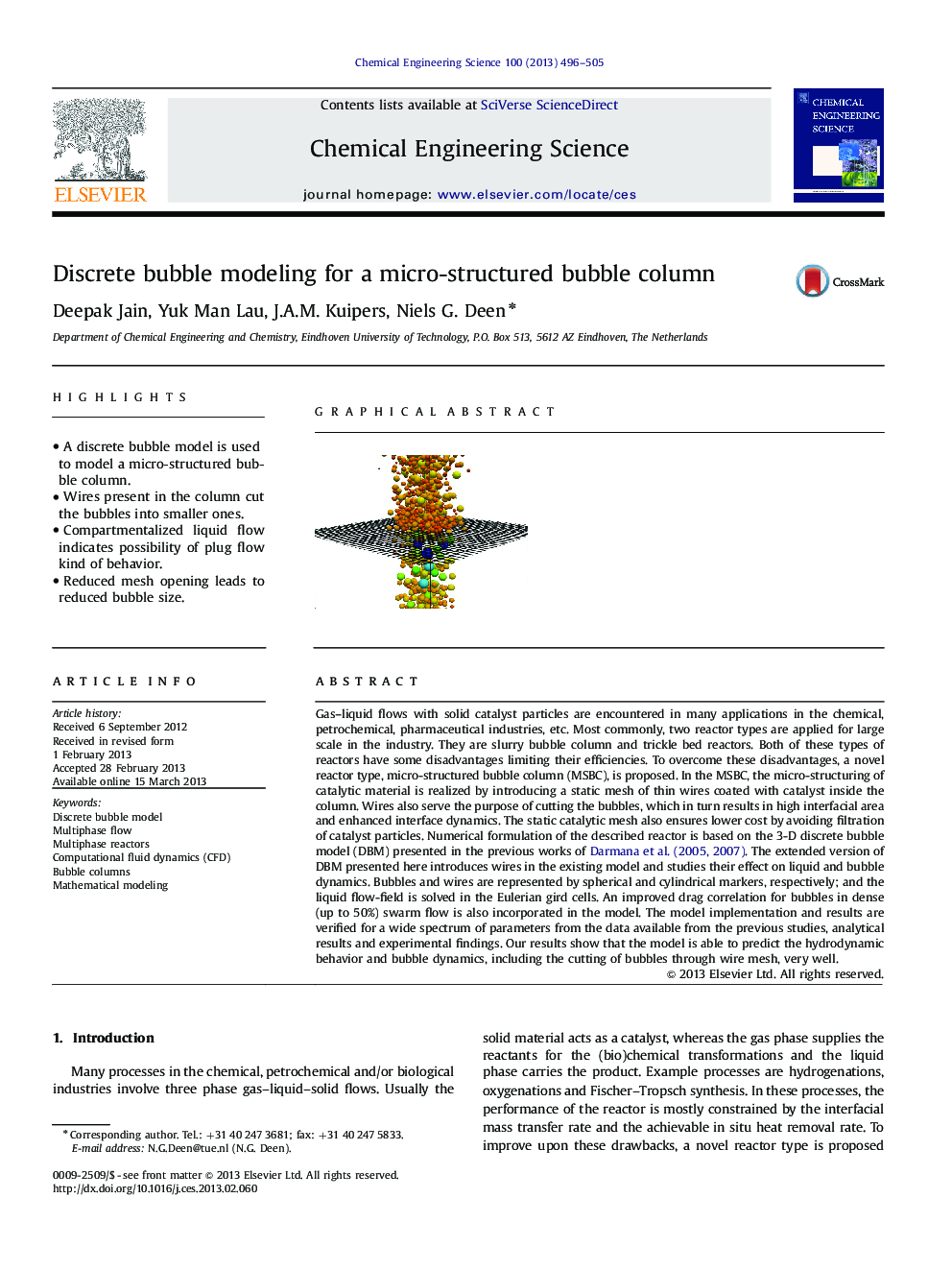| کد مقاله | کد نشریه | سال انتشار | مقاله انگلیسی | نسخه تمام متن |
|---|---|---|---|---|
| 155094 | 456883 | 2013 | 10 صفحه PDF | دانلود رایگان |

• A discrete bubble model is used to model a micro-structured bubble column.
• Wires present in the column cut the bubbles into smaller ones.
• Compartmentalized liquid flow indicates possibility of plug flow kind of behavior.
• Reduced mesh opening leads to reduced bubble size.
Gas–liquid flows with solid catalyst particles are encountered in many applications in the chemical, petrochemical, pharmaceutical industries, etc. Most commonly, two reactor types are applied for large scale in the industry. They are slurry bubble column and trickle bed reactors. Both of these types of reactors have some disadvantages limiting their efficiencies. To overcome these disadvantages, a novel reactor type, micro-structured bubble column (MSBC), is proposed. In the MSBC, the micro-structuring of catalytic material is realized by introducing a static mesh of thin wires coated with catalyst inside the column. Wires also serve the purpose of cutting the bubbles, which in turn results in high interfacial area and enhanced interface dynamics. The static catalytic mesh also ensures lower cost by avoiding filtration of catalyst particles. Numerical formulation of the described reactor is based on the 3-D discrete bubble model (DBM) presented in the previous works of Darmana et al., 2005 and Darmana et al., 2007. The extended version of DBM presented here introduces wires in the existing model and studies their effect on liquid and bubble dynamics. Bubbles and wires are represented by spherical and cylindrical markers, respectively; and the liquid flow-field is solved in the Eulerian gird cells. An improved drag correlation for bubbles in dense (up to 50%) swarm flow is also incorporated in the model. The model implementation and results are verified for a wide spectrum of parameters from the data available from the previous studies, analytical results and experimental findings. Our results show that the model is able to predict the hydrodynamic behavior and bubble dynamics, including the cutting of bubbles through wire mesh, very well.
Figure optionsDownload high-quality image (233 K)Download as PowerPoint slide
Journal: Chemical Engineering Science - Volume 100, 30 August 2013, Pages 496–505